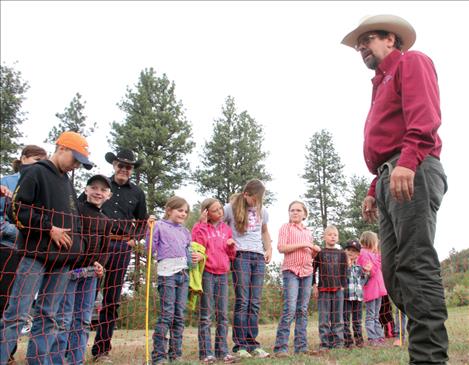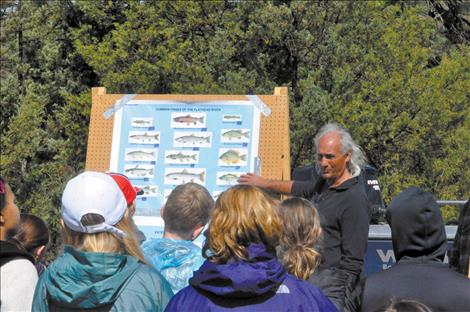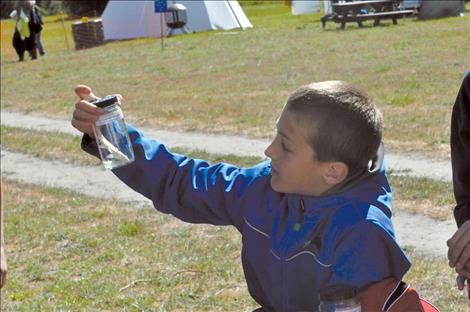River Honoring teaches students about natural resources
Hey savvy news reader! Thanks for choosing local.
You are now reading
1 of 3 free articles.
MOIESE – Humans can play a key role in protecting and preserving the pristine blue Flathead River and its aquatic inhabitants, more than 1,000 students learned at the Confederated Salish and Kootenai Tribes’ annual River Honoring held May 11-13.
The event has educated fourth and fifth graders from local schools since the 1980s, when a push for dam creation on the Lower Flathead River led tribal advocates to create massive education events to harbor public appreciation for the river. The course of the body of water had already been altered by the creation of Kerr Dam in the 1930’s, which caused degradation of cultural sites and environmental habitat.
“It’s just become such an institution for the spring,” Tribal Biologist Whisper Camel Means said. She now sees grown people at the event who were treated to River Honoring as children decades ago.
“I think it’s a really cool way that the kids get to spend the day outside, but absorb learning in a more hands-on way than just sitting in the classroom,” Camel Means said. “They get to see what we do in the field.”
Among the display tipis were the stations where students encountered rescued birds of prey from the Montana Wild Wings Recovery Center. The Tribal Water Management Program had a number of water measuring instruments on hand. Fishery workers showed the different types of native and nonnative species, with live sucker fish available for handling. Cultural stations also showed the importance of the river to native people who have inhabited the region for centuries.
The body of water has long been of importance to the Pend d’Oreille, Salish and Kootenai tribes who used it as a travel highway and food source. The Pend d’Oreille were so connected to the river that their sign language gesture for their self-identity mimicked that of a canoe-stroke.
Anthropologist Carling Malouf once wrote that “the density of occupation sites around Flathead Lake, and along the Flathead River ... indicates that this was perhaps, the most important center of ancient life west of the Continental Divide.”
The program is in high demand. Tribal Manager of the Division of Fish, Wildlife, Recreation and Conservation Tom McDonald said classes come from all over Montana and from out of state to access the program. On-reservation schools take the spots first.
“There’s a huge demand from schools all
the way from Eureka to Darby,” McDonald said.
“We’ve had students from Helena all the way over to Darby. We’ve had some come from Coeur d’Alene … Having staff that is willing to meet with kids is so important.”
Flathead Wildlife Board Member Pelah Hoyt said her children enjoyed the event.
“My boys loved the fish traps,” she said.
Tribal Wildlife Program Manager Dale Becker said the event is important.
“We’ve all found that students are just little information sponges,” Becker said. “They love to get out in the open, out of the classroom … We put a lot of emphasis on that because hopefully we are developing little minds that are going to be habitat and wildlife friendly down the line.”















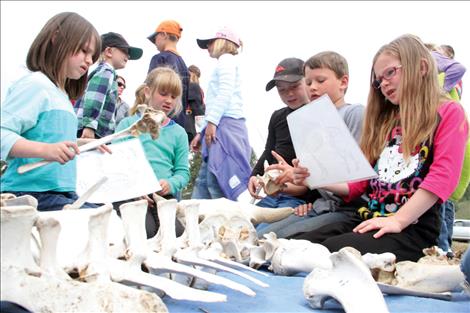
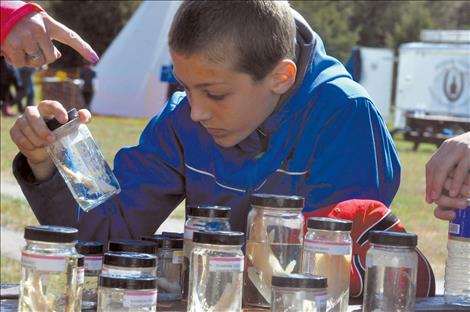
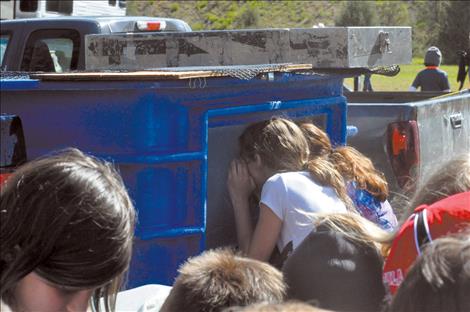
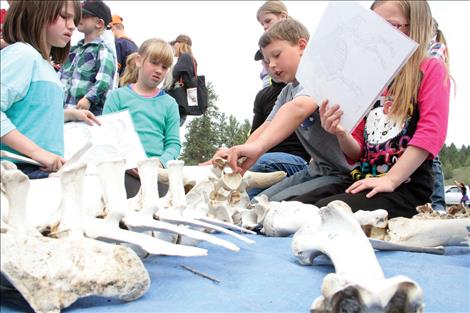
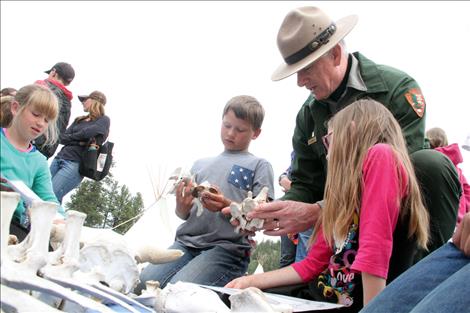
fishprint_SG.jpg)
